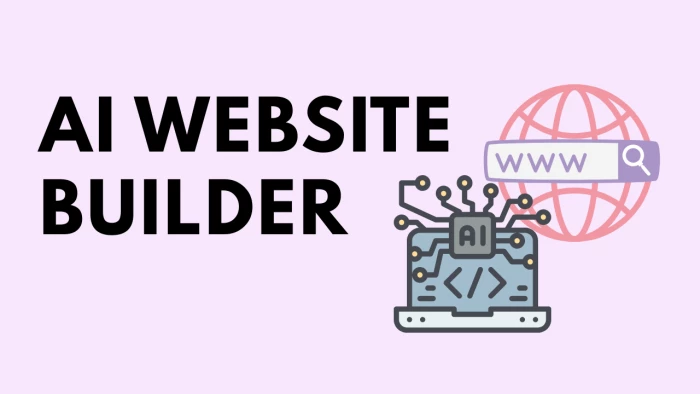Building a website used to be a time-consuming task, requiring coding skills, design expertise, and plenty of patience. Today, thanks to AI website builders, you can launch a professional site in hours—without touching a single line of code. These tools use artificial intelligence to generate layouts, suggest content, optimize SEO, and even integrate e-commerce features automatically.
If you’re looking to establish your online presence quickly and effectively, here’s a step-by-step guide to creating a website with AI builders, plus a comparison of the top options available in 2025.
Step 1: Choose the Right AI Website Builder
Not all AI builders are created equal. Some are designed for small businesses, others for portfolios or e-commerce stores. Popular choices in 2025 include:
- Wix ADI – Beginner-friendly with plenty of templates and apps.
- 10Web – AI-powered WordPress builder with hosting and optimization tools.
- Durable AI – Creates websites in under 30 seconds, ideal for quick launches.
- Framer AI – Known for sleek, modern, design-first websites.
- Hostinger Website Builder – Affordable with AI SEO and marketing tools.
👉 Tip: Consider your goals—whether you need an online shop, blog, or portfolio—before picking a builder.
Step 2: Define Your Website’s Purpose
AI works best when it understands your goals. Clarify whether your site is for business, personal branding, blogging, or selling products. Then define your target audience and the primary action you want them to take (e.g., booking, purchasing, subscribing).
Step 3: Generate Your Website with AI
Once you input your goals, industry, and preferences, the AI will generate a ready-to-edit site. This usually includes:
- A homepage with auto-designed layouts and CTAs
- About and service/product pages with draft content
- Contact forms or booking integrations
- SEO-friendly page structures
At this stage, your site is already functional—it just needs customization.
Step 4: Customize the Design and Content
- AI gives you the foundation, but your personal touch makes it unique.
- Rewrite AI-generated text to fit your brand’s voice.
- Swap stock images for your own visuals, or use AI image tools.
- Adjust colors, fonts, and logos for consistency.
- Add blog posts, case studies, or testimonials to build trust.
- Most AI builders use drag-and-drop editors, so no coding is required.
Step 5: Add Essential Features
To maximize functionality, integrate:
- E-commerce tools for product listings and secure checkout
- SEO automation for keywords, meta tags, and rankings
- Analytics to track visitor behavior
- Marketing features like email signups, chatbots, or social links
These features make your site not just attractive, but growth-ready.
Step 6: Preview and Test
Before going live:
- Test on mobile, tablet, and desktop
- Check page speed and responsiveness
- Ensure links and forms are working
- Gather feedback from colleagues or friends
Step 7: Publish Your Website
When everything looks good, hit Publish. Most AI builders include hosting, SSL certificates, and options for custom domains. If you already own a domain, you can connect it seamlessly.
Step 8: Keep Improving with AI
Post-launch, AI continues to help by:
- Suggesting content updates based on performance
- Enhancing SEO rankings automatically
- Offering marketing recommendations
Your website becomes a living project, constantly optimized without heavy manual work.
Comparing AI Website Builders: Pricing, Pros & Cons
Here’s how some of the leading AI website builders compare in 2025:
10Web
- Pricing: Starter from around $10/month; premium tiers up to $45/month.
- Pros: Built on WordPress with plugins and SEO tools; hosting and optimization included; strong performance.
- Cons: Costs add up for multiple sites; customization limits on lower plans; occasional bugs reported.
Durable AI
- Pricing: Starts at ~$12/month; advanced plans $20–80/month.
- Pros: Incredibly fast setup; beginner-friendly; includes business tools like invoicing and CRM.
- Cons: Templates can look generic; limited deep customization; not ideal for complex e-commerce.
Wix ADI
- Pricing: Plans range from $17/month for personal sites to $159/month for advanced business packages.
- Pros: Extremely user-friendly; huge library of templates and apps; polished designs.
- Cons: Higher costs for premium features; limited code-level customization; Wix ads on free/cheap plans.
Final Thoughts
Creating a website is no longer reserved for developers or tech-savvy entrepreneurs. With AI website builders, anyone can launch a professional, SEO-friendly, and scalable website in just a few hours.
Whether you choose Wix ADI for simplicity, 10Web for WordPress power, or Durable AI for speed, the key is to define your goals and let AI do the heavy lifting—while you focus on adding the personal touches that make your site stand out.
The future of web design is here—and it’s powered by AI.

